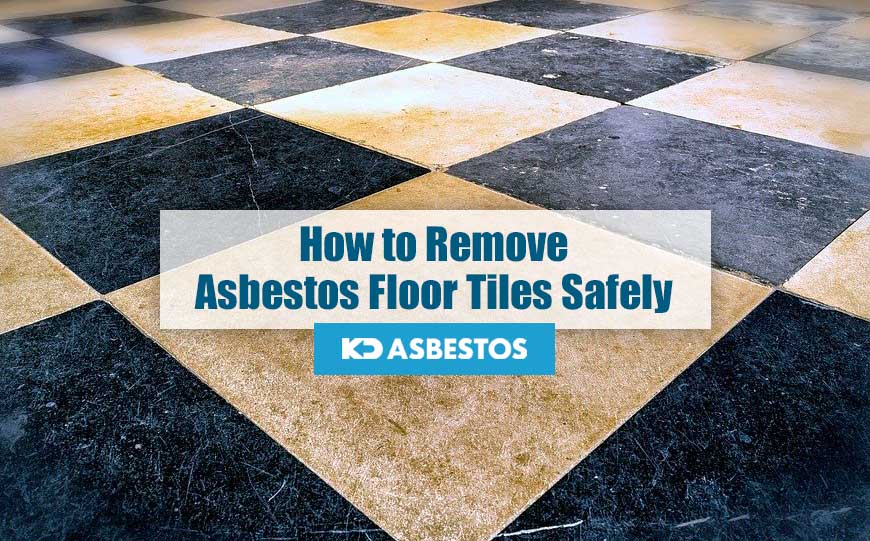
Asbestos floor tiles were widely used during the last century.
As a result, it is common to find them in homes and buildings which were built during that period.
While the tiles are laid firmly in place, there’s no great need to worry about them.
But once you decide to remove them to replace the existing flooring, you need to be extremely careful as disturbed asbestos is a serious health hazard.
Table of Contents
Why are Asbestos Floor Tiles Dangerous?
Before asbestos was banned, it was previously used as an additive in construction to make the material stronger.
This fibrous substance was often used in floor tiles as well as in the adhesives that hold the tiles together.
As long as the tiles are not disturbed in any way, then there is no direct risk of hazardous asbestos fibres from being released into the air and inhaled.
However if you notice that any of the tiles are deteriorating, then you should seek assistance from an asbestos professional.
This is because any cracked tiles, or tiles that seem to have flaking or crumbling parts could potentially be dangerous.
Asbestos has been associated with various serious diseases including lung cancer, asbestosis and mesothelioma.
When the asbestos fibres are inhaled, they make their way to the lungs where they cause the most serious damage.
The asbestos fibres are also trapped in the nose and the throat’s mucous membranes, and they could even make their way to the digestive tracts.
Friable vs Non-Friable Asbestos
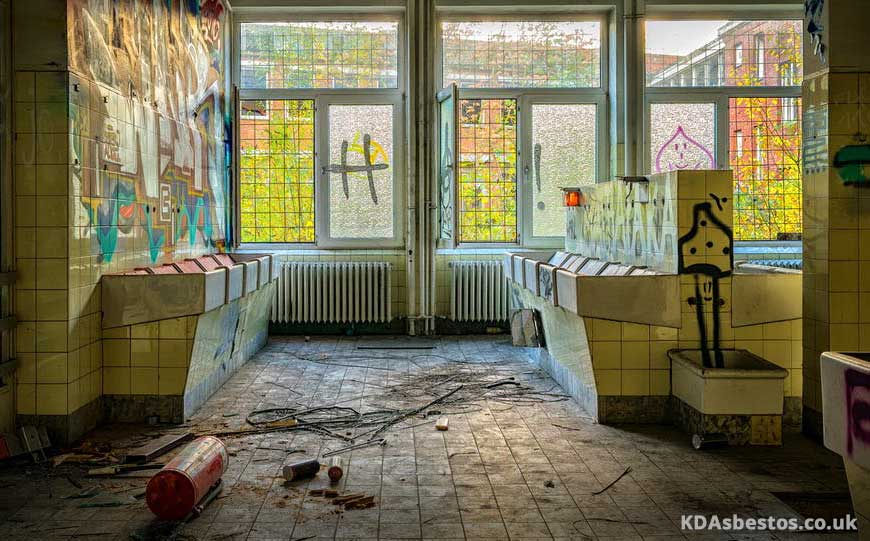
The main aspect to consider when discussing the dangers associated with asbestos is the friability level.
This refers to the types of asbestos material’s tendency to break down in some way.
This could be chipping or crumbling that could result from scraping or abrasion.
Asbestos containing materials (ACMs) that are more likely to be damaged and end up releasing asbestos fibres are said to be friable.
Hence, if your floor tiles look worse for wear, and you can see chipping, flaking or crumbling parts especially where there is any cracking, chances are that they are friable.
Besides natural damage, other direct causes could be responsible for floor tiles to become friable.
This includes any drilling, buffing, grinding or cutting.
If tiles undergo continuous vibration or are exposed to water damage, it is also more likely for them to develop signs of wear.
In such cases, it’s critical that you seek professional assistance.
On the other hand, if you see that it is not likely for the floor tiles to be damaged and if you are not considering disturbing them in any way, they can be classified as non-friable.
Can You Overlay the Existing Floor?
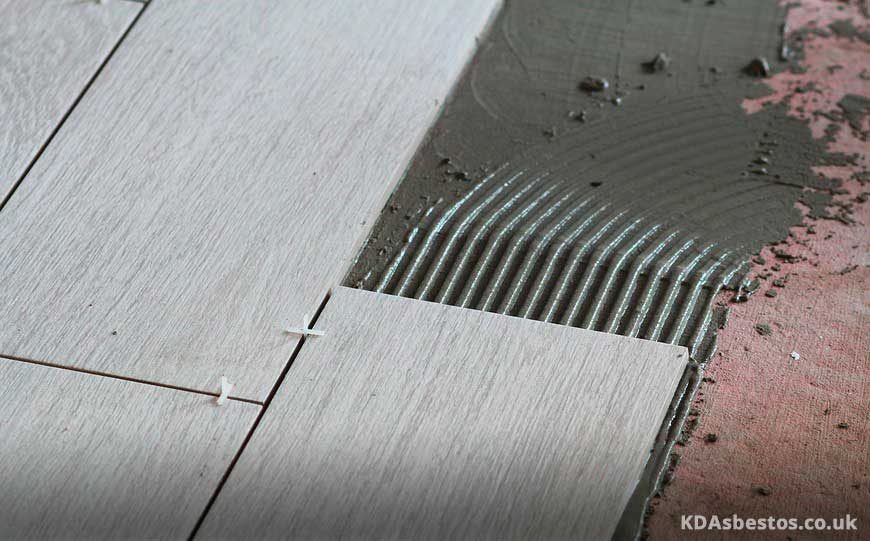
If you suspect your floor tiles might contain asbestos, but you don’t want to get into the expense and hassle of having them removed, you might consider overlaying the floor.
This is often considered as a viable option, but it’s very important that you warn anyone concerned that the asbestos floor tiles have been covered up by overlaying.
This is to ensure that if any works take place in the future, there will still be suitable management of the hazardous tile material.
Overlaying can also include the possibility of sealing or encapsulating the floor tiles with a coating of epoxy floor paint.
This will help to keep asbestos trapped within the tiles.
How to Remove Asbestos Tiles Yourself
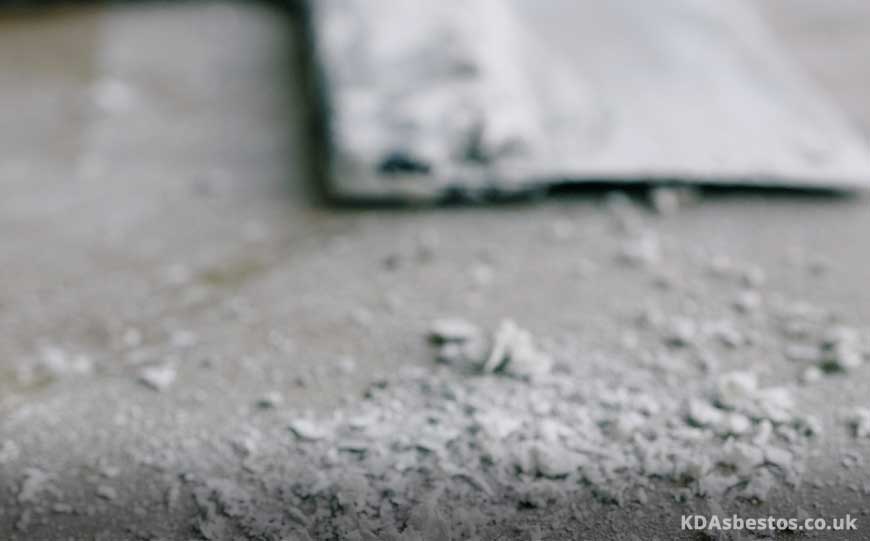
There are various dangers associated with removing asbestos floor tiles yourself.
First of all, if you break any tile in pieces whilst removing, you have turned it into a friable material.
Needless to say, it is very hard to keep the tiles intact as you remove them.
Moreover, even the old adhesive underneath the tiles could contain asbestos.
First of all, full personal protective equipment will need to be worn throughout the process.
This includes disposable overalls complete with a hood, disposable gloves, boots that do not include laces, and most importantly, respiratory protective equipment.
A simple dust mask will not suffice for such a job.
A half or full face mask complete with a HEPA filter is a must.
Afterwards you will need to acquire certain equipment and supplies, and follow a number of important steps, as outlined below.
But let us give an overview of the method that is generally used for tile removal.
You will need to put the scraper in the joints between the floor tiles and start to lift the tile up.
This needs to be done very carefully as you must avoid breaking any tiles.
The scraper will need to be tapped with a hammer to pry off tiles that are not easy to remove.
You might need to use a shovel instead of a scraper to speed up the process, in cases where there are many floor tiles to remove.
That said, since the shovel is larger you will risk breaking the tiles in the process.
While you’re working, you will also need to wet the tiles and the space underneath them to keep the work area moist, and reduce the risk of asbestos fibres making their way in the air.
In the case of asbestos paper tile backing, it is important to wet it well while you are lifting the tile.
Any adhering mastic will also need to be scraped.
To do this, it is best to soften it up slightly by using some solvent, or by applying dry ice or warming it with an infra-red lamp.
So as you can see, removing asbestos tiles is a precarious job which needs time and patience, plus a great deal of care and attention.
Thus considering all this and the risks involved, it’s best to contact an asbestos professional to remove the tiles.
Prepping Work Area
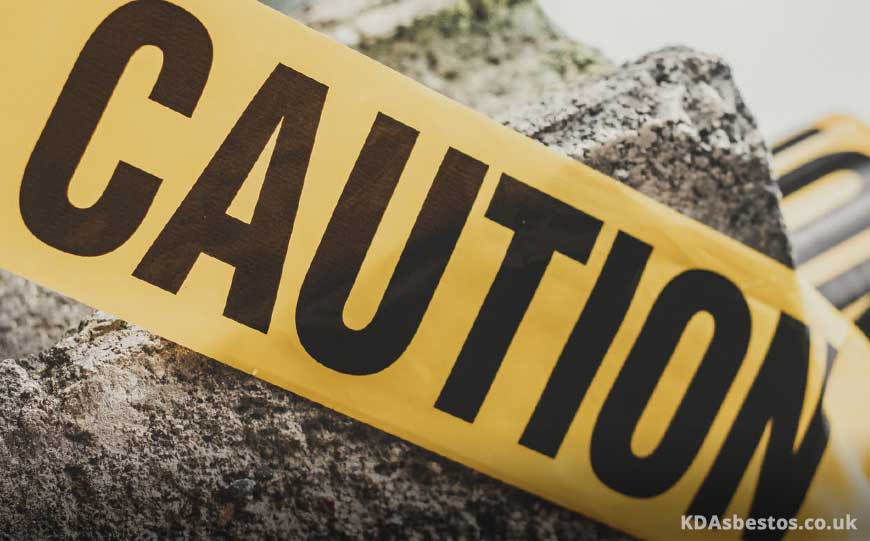
The work area needs to be sealed off and only a limited number of people should be allowed entry.
Any doors and windows will need to be fully closed.
Any air vents should also be sealed as you need to ensure that no asbestos fibres escape from the sealed off area.
It is important to make sure that you have the necessary tools and supplies, to avoid leaving the area once the job has started.
Also make sure that there is a suitable light to allow you to see properly while working, especially since natural light from windows might not be enough.
Tools & Equipment
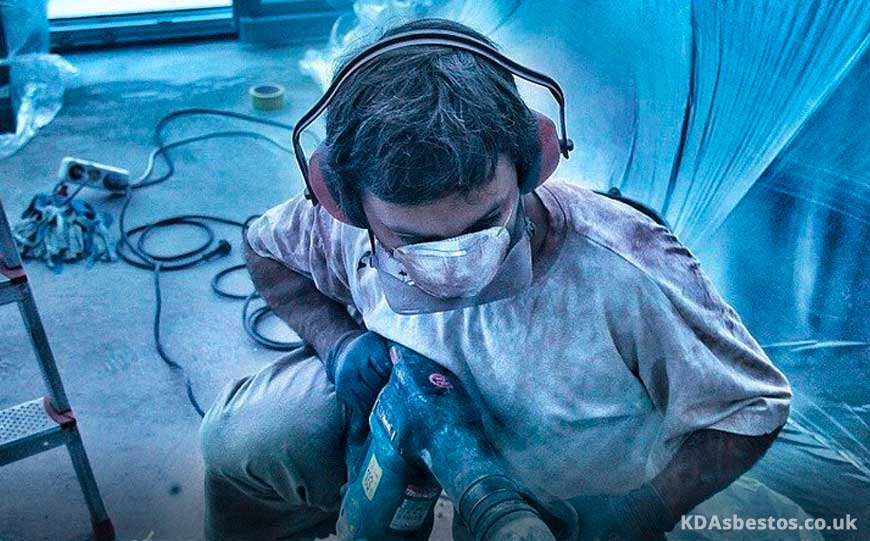
The work area will need to be sealed off to avoid any asbestos decontamination.
So you will need plastic sheets to cover up any doors, windows, air vents etc.
Also, it is a good idea to use warning tape to cordon off the area.
You will also need to set up an air purifier with a HEPA filter to reduce the risk of contamination.
A pump sprayer filled with water is another useful tool.
It’s important to keep asbestos materials wet so prevent the dust particles from getting in the air.
So the floor will need to be well sprayed with water.
This also needs to be done to the old adhesive underneath the tiles.
Keeping them as damp as possible is of utmost importance.
A HEPA vacuum to trap away any dust is also recommended once the work is completed.
For the tile removal job itself you will need the following tools:
- A scraper
- A sharp knife
- A hammer
- A shovel
- Pump sprayer
- Buckets of water
- Rags
Cleaning & Disposing
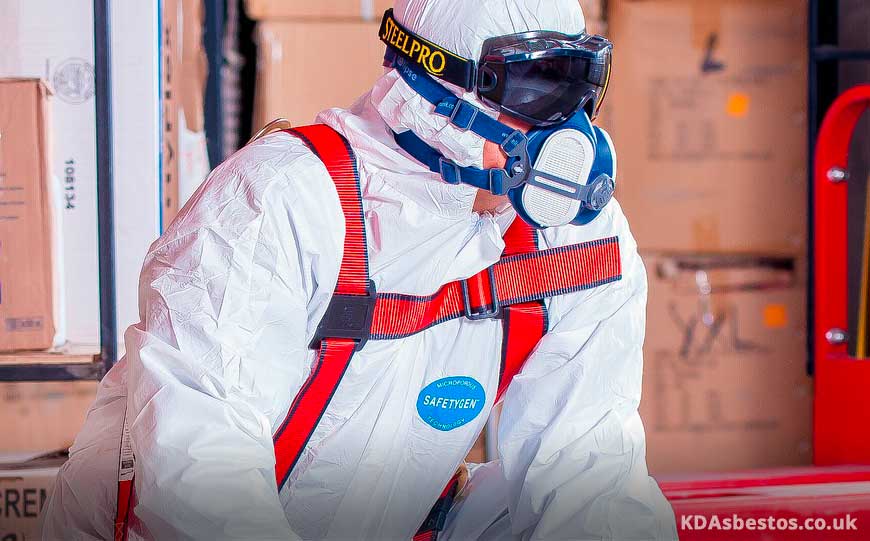
Damp rags should be used on the area where the tiles were removed, and cleaning should be done using a vacuum cleaner, ideally a Class H.
All equipment that was used for the tile removal should be cleaned with wet rags.
All the tiles and debris will need to be placed in a clear polythene waste bag.
Then this should be carefully placed in an asbestos waste bag.
Tape it closed to make sure it is safe.
Disposal needs to be carried out according to the regulations in your area.
There are certain landfill sites where you may dispose of asbestos waste.
Naturally, all this would be handled better if you hire a professional company who will be able to dispose of the waste according to local regulations, and you would not have to worry about a thing.
Decontamination
A decontamination process is carried out to make sure the area is safe to be accessed after the tile removal.
Any protective gear should be disposed of, and proper cleaning is of utmost importance.
The best decontamination is carried out by a professional asbestos company who will have experienced personnel to see to the job.
Reasons to Hire a Professional
It is not easy to identify asbestos.
Some floor tiles will have asbestos backing, while others could have asbestos fibres even on their surface area.
You cannot really tell if your floor tiles contain asbestos unless you hire a professional who will carry out sample testing in a UKAS certified lab.
This is highly recommended if you are planning any remodeling or the complete removal of your floor tiles.
As already outlined above, the tile removal process is time consuming and it calls for a great deal of care.
You need to follow certain steps as well as rigorous routines to ensure safety as much as possible.
Considering everything, it is better to leave the job in the hands of a professional company who would be able to save you the time and effort involved.
More importantly, ensure that the job is done safely and properly.
Conclusion
You need to bear in mind that asbestos tile removal is a sensitive procedure that requires a great deal of care and professionalism to be carried out as safely as possible.
You will also need to use certain tools and equipment to do the job properly.
Hence, it is always best to leave such a task to a professional team who will have the required tools, equipment, skills and expertise to do this.
Moreover, the law requires licensed professionals to carry out this job in commercial buildings, for obvious safety reasons.
So you will need to consult the regulations applicable for asbestos removal as well as for its disposal thereafter.